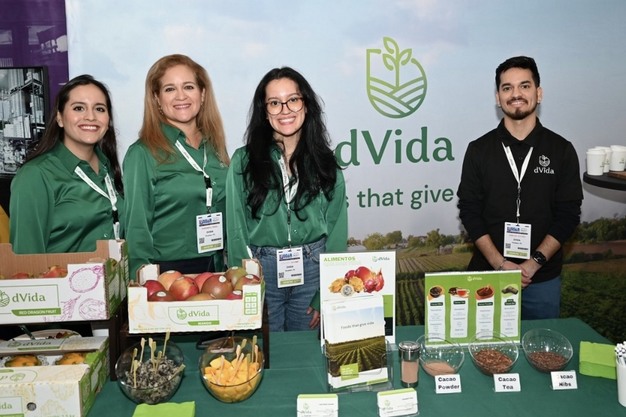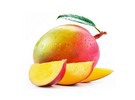Mango supply is still limited thanks to the El Niño phenomenon and the subsequent winter rains. “Aside from smaller sized mangos, the rain brings additional quality concerns on harvested fruit, so we employ a more strict quality control at the farms and packing facility,” says Ana Paula Jacome of dVida. “This allows us to supply our clients with the best quality mango regardless of the current conditions.”
 The dVida team.
The dVida team.
Overall, dVida has seen about a 65 percent reduction in the market’s supply compared to last season. Along with impacting the overall supply, the climate effect has also shifted and delayed harvest times, so dVida continues to focus on the Tommy Atkins and Kent varieties from Ecuador and isn’t working on new varieties yet.
“Ecuador’s mango season started three weeks later due to climate conditions,” says Jacome, noting the season is expected to end in mid-January, though that’s dependent on the amount of rain the region continues to receive. “Peru’s season was also delayed compared to last year.”
The majority of dVida’s supply is from coastal regions in Ecuador.
Pricing and demand As for demand, it has stayed relatively constant this year though the supply shortage this season has caused some surge in pricing. In turn, that’s leading some customers to look for substitute foods in the short term. “We foresee increased consumption and demand of tropicals, particularly mango. Mango has become a tropical staple in American households,” says Jacome, noting that along with being a nutrient-rich and versatile fruit, its availability year-round and accessibility to consumers in grocery stores is helping consumption levels of the fruit.
As for demand, it has stayed relatively constant this year though the supply shortage this season has caused some surge in pricing. In turn, that’s leading some customers to look for substitute foods in the short term. “We foresee increased consumption and demand of tropicals, particularly mango. Mango has become a tropical staple in American households,” says Jacome, noting that along with being a nutrient-rich and versatile fruit, its availability year-round and accessibility to consumers in grocery stores is helping consumption levels of the fruit.
Indeed, pricing has increased notably compared to last season which isn’t surprising given the conditions faced this year. “The prices this season are almost double. The limited mango supply and increase in farming materials/care have fueled this increase in prices,” says Jacome.
Looking ahead, steady mango shipments are expected until the end of the season in Ecuador though Jacome notes that the unpredictability of the weather will continue to be a challenge generally in mango production. While it’s already seeing shifts in the typical seasons of some products, it’s also working to keep production steady for clients and exploring ingenious farming techniques to do so.
 For more information:
For more information:
Ana Paula Jacome
dVida
paula@dvidaco.com
www.dvidaco.com
